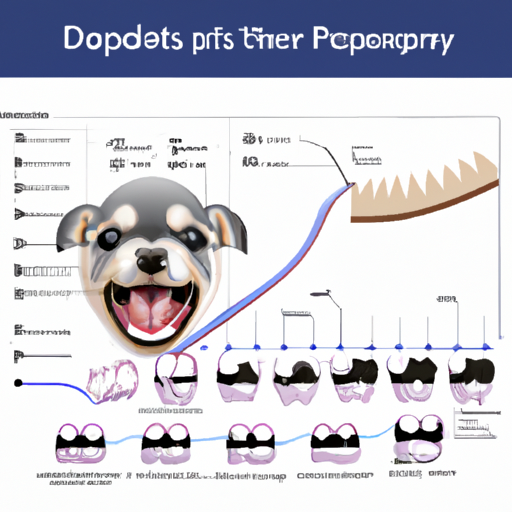As a caregiver, you play a huge role in the health and well-being of your pet. In this guide, we will delve into the fascinating world of puppy dental development. Our aim is to provide you with comprehensive information and a puppy teeth chart to help you navigate through the exciting, but sometimes confusing, process of your pup’s teething phase.
Understanding Puppy Teeth Development
Understanding your puppy’s dental development is crucial. Just like in humans, a puppy’s teeth are essential for their nutrition and overall health.
- Baby Teeth: Puppies are born without teeth. Their baby teeth, also known as deciduous teeth, start coming in when they are about 2-4 weeks old.
- Adult Teeth: The baby teeth start falling out around 12 weeks, and are replaced by adult teeth. By the time your puppy is about 6-7 months old, they should have all 42 of their adult teeth in place.
Puppy Teeth Chart: A Visual Guide
Here’s a simple chart to help you understand the timeline of your puppy’s dental development:
| Age | Teeth Development |
|---|---|
| 2-4 weeks | Baby teeth start to appear |
| 5-6 weeks | All 28 baby teeth have emerged |
| 12 weeks | Baby teeth start falling out |
| 16 weeks | Most adult teeth are in |
| 6-7 months | All 42 adult teeth are in place |
Signs Your Puppy Is Teething
Just like human babies, puppies also experience discomfort during their teething phase. Some common signs include:
- Chewing on objects
- Drooling
- Loss of appetite
- Irritability
How to Help Your Teething Puppy
Here are some ways you can comfort your teething puppy:
- Provide Chew Toys: Chew toys can provide relief from the discomfort.
- Cold Chews: Chewing on something cold can help soothe their gums.
- Regular Vet Checkups: Regular dental checkups ensure that your puppy’s teeth are growing in correctly.
Caring for Your Puppy’s Teeth
Caring for your puppy’s teeth is not just about dealing with the teething phase. It is a lifelong commitment. Here are some tips:
- Start brushing their teeth early
- Use dog-friendly toothpaste
- Provide a balanced diet
- Regularly inspect their mouth
Common Puppy Dental Problems
Awareness about potential dental problems can help you spot issues early and get them treated. Some common puppy dental problems include:
- Retained Baby Teeth: Sometimes, a baby tooth doesn’t fall out and can cause problems for the adult tooth.
- Malocclusion: This is when the teeth don’t align properly when the mouth is closed.
- Periodontal Disease: This is caused by plaque buildup and can lead to tooth loss if not treated.
FAQ’s
Q: How many teeth do puppies have?
A: Puppies have 28 baby teeth and 42 adult teeth.
Q: When do puppies start teething?
A: Puppies start teething around 2-4 weeks old when their baby teeth start to appear.
Q: How can I help my teething puppy?
A: Providing chew toys, cold chews, and ensuring regular vet checkups can help your teething puppy.
Q: How do I care for my puppy’s teeth?
A: Start brushing their teeth early, use dog-friendly toothpaste, provide a balanced diet, and regularly inspect their mouth.
As a caregiver, understanding your puppy’s dental development and being attentive to their dental health is key. With the knowledge from this guide and the puppy teeth chart, you are well-equipped to ensure that your puppy has a healthy set of teeth.



